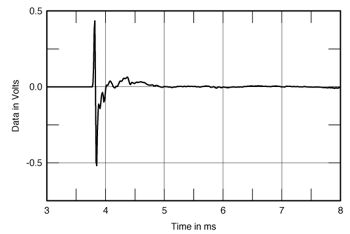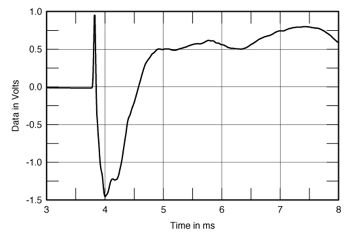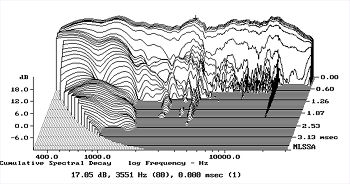| Columns Retired Columns & Blogs |
Sonus Faber Amati Homage loudspeaker Measurements part 4
The Sonus Faber's impulse response (fig.9) is conventional, though some early reflections can be seen. The step response (fig.10) reveals that the tweeter and woofers are connected in positive acoustic polarity, the midrange in inverted polarity. The speaker's cumulative spectral-decay plot (fig.11) is basically clean, but with some very slight modes evident at the top of the midrange unit's passband.

Fig.9 Sonus Faber Amati Homage, impulse response on tweeter axis at 50" (5ms time window, 30kHz bandwidth).

Fig.10 Sonus Faber Amati Homage, step response on tweeter axis at 50" (5ms time window, 30kHz bandwidth).

Fig.11 Sonus Faber Amati Homage, cumulative spectral-decay plot at 50" (0.15ms risetime).
While some of the Amati Homage's measurements are excellent, there is nothing to indicate why Michael Fremer was so enamored of the speaker's sound. Indeed, some of the measurements, such as of the speaker's bass performance, raise more questions than they answer. But if a demonstration is required of the fact that once the basic science has been addressed, speaker design still involves art, the Sonus Faber Amati Homage provides it.—John Atkinson
- Log in or register to post comments




































